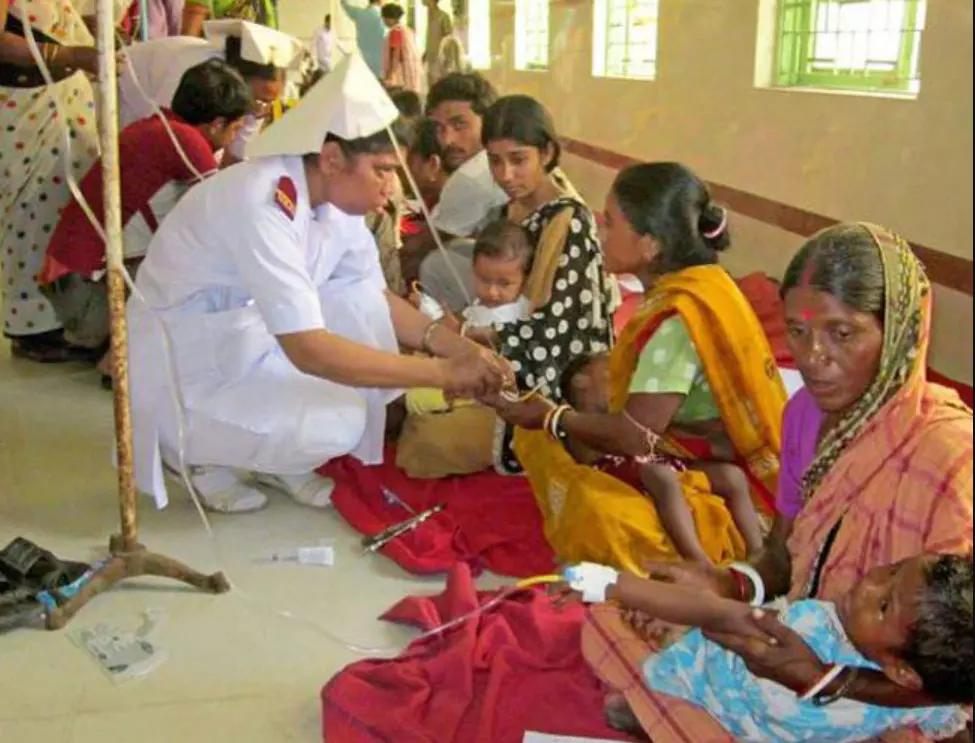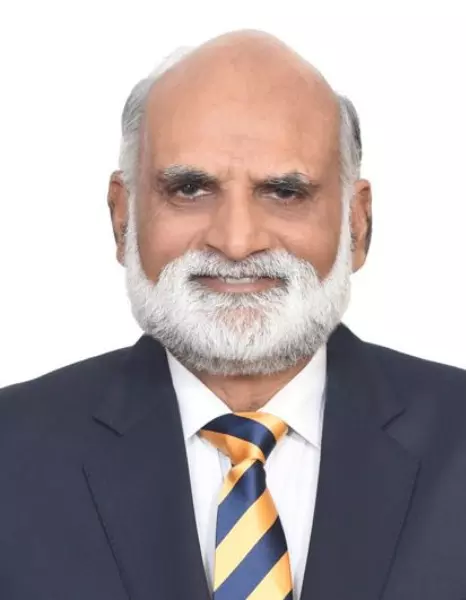Taming the Silent Storm
World Hepatitis Day is an opportunity to reignite a drive towards dismantling the stigma around the disease, alongside bridging inequities and combining medicine and policy to eliminate the curable scourge

It was in 2008 that the World Hepatitis Alliance, in collaboration with patient groups, declared May 19 as the first global World Hepatitis Day. After a resolution passed at the 63rd World Health Assembly in May 2010, World Hepatitis Day received worldwide support as the global awareness day for campaigns. It was observed from July 28, 2010 to honour the birthday of Nobel Laureate Baruch Samuel Blumberg, who discovered the hepatitis B virus in 1967, and developed a vaccine for the same.
Today, World Hepatitis Day is observed in over 100 countries. It’s marked by a wide range of events — from free health screenings and poster campaigns to concerts, talk shows, flash mobs, demonstrations, and vaccination drives — all aimed at raising awareness and pushing towards the global elimination of hepatitis.
Every 30 seconds, someone somewhere in the world loses their life to a hepatitis-related illness. According to the World Health Organization report, in India, hepatitis related diseases are a public health challenge, with 3.5 crore infections annually. Despite this serious observation, it is heartening to note that most hepatitis related deaths or infections can be prevented with the right measures, timely diagnosis, and effective treatments. The fact is that hepatitis does not affect all communities equally — it disproportionately impacts underserved and marginalized communities. In this backdrop, it is important to counter and remove barriers that are financial, social, and systemic in nature.
In 2022, India accounted for 11.6 per cent of the global hepatitis burden, with 35.3 million cases, making it second to only China in terms of the total number of infections, (World Health Organization). Specifically, India had 29.8 million hepatitis B cases which is equivalent to 11.7 per cent of the total global hepatitis B cases and 5.5 million hepatitis C cases or 11.2 per cent of the total global hepatitis C Cases. Globally, 254 million people were living with hepatitis B and 50 million with hepatitis C in 2022 (Global hepatitis report 2024 -WHO).
This year’s World Hepatitis Day theme, “Hepatitis: Let’s Break It Down,” is a timely and powerful reminder that elimination is not just about medicine; it’s about looking at the issue in a holistic manner, after all, there is no one size that fits all when it comes to addressing the multitude of factors that need to be considered and looked into while devising a sound strategy that effectively engages with this multi-faceted subject.
Hepatitis is an inflammation of the liver that is caused by a variety of infectious and non-infectious factors, leading to various health complications, some of which can be life-threatening. There are five main types of hepatitis viruses: A, B, C, D, and E. While all affect the liver, they differ significantly in terms of transmission routes, severity, geographic prevalence, and prevention strategies. Each virus presents unique challenges—for instance, hepatitis B and C are especially dangerous as they can develop into chronic infections resulting in liver cirrhosis and liver cancer. Many individuals remain asymptomatic for years, unknowingly spreading the virus and missing the window for early diagnosis and treatment.
Hepatitis A and E are typically caused by ingestion of contaminated food or water. Hepatitis B, C and D usually occur as a result of parenteral contact with infected body fluids. Common modes of transmission for these viruses include receipt of contaminated blood or blood products, invasive medical procedures using contaminated equipment and for hepatitis B transmission from mother to baby at birth, from family member to child, and also by sexual contact.
The government has taken some commendable steps to mitigate the hepatitis menace. The National Viral Hepatitis Control Program was launched in 2018 under the National Health Mission and aims to eliminate hepatitis C by 2030. It also targets to reduce morbidity and mortality in line with the Sustainable Development Goal (SDG) 3.3.
The program adopts a comprehensive approach, focusing on awareness, prevention, screening, diagnosis, and free treatment for hepatitis B and C through designated centers. Expert-developed national guidelines ensure standardized diagnosis and treatment protocols across facilities. As of March 2024, the program has screened over 10.34 crore individuals, provided treatment to 3.3 lakh patients, and strengthened 978 treatment centers across 711 districts.
Under the leadership of our Hon’ble Prime Minister, many government initiatives are helping in the fight against diseases like hepatitis A. For example, Swachh Bharat Abhiyan is improving cleanliness and hygiene all over the country. Har Ghar Jal is making sure every household gets clean drinking water, which is very important because hepatitis A spreads through contaminated water. And then there's Eat Right India, which is encouraging people to eat safe and hygienic food, helping prevent foodborne diseases. All these efforts together are playing a critical role in keeping people healthy and providing affective guardrails against diseases.
To achieve the goal of eliminating hepatitis in India by 2030, one of the greatest challenges that has to be surmounted is inequity. Those at the highest risk, such as people living in remote or low-income areas, migrant workers, intravenous drug users, and even pregnant women, are often the least likely to receive timely diagnosis or treatment. Social stigma is another critical barrier that compounds the problem. In India, particularly with Hepatitis B (HBV), stigma remains deeply entrenched. Misconceptions about how the disease spreads often lead to social ostracization and discrimination. For example, many wrongly believe HBV can be transmitted through casual contact, which fuels fear and avoidance of those infected. The stigma is frequently tied to moral judgments, with hepatitis sometimes wrongly associated with behaviors such as drug use or promiscuity. This false perception not only alienates individuals but also deters them from seeking medical help. In some cases, even healthcare providers exhibit bias, creating further barriers to care and compromising patient outcomes.
Winning the battle against this disease requires a multi-sectoral and collaborative approach, bringing together governments, healthcare providers, civil society, and communities. A key priority must be investing in universal vaccination, especially administering the hepatitis B vaccine at birth, which remains one of the most effective preventive tools. Equally important is expanding access to affordable diagnostics and antiviral treatments, enabling early detection and timely care for those infected. Public awareness campaigns are crucial to dispel myths and reduce the stigma that often prevents people from seeking help. Integration of hepatitis screening, treatment, and counselling services into primary healthcare systems will ensure that care is accessible, especially for those in remote or underserved areas. Additionally, the active involvement of community leaders and influencers can help bridge trust gaps and engage vulnerable populations more effectively.
World Hepatitis Day gives us the right opportunity to reaffirm our collective commitment to the global goal of hepatitis elimination. Everyone needs to do their bit, and in this regard the ‘Illness to Wellness Foundation’ (ITWF) is dedicated to promoting holistic well-being by raising awareness through health education, sustainable hygiene, lifestyle changes, and blending ancient wisdom with modern technology. Launched in 2014, the Illness to Wellness (ITW) Campaign focuses on preventive care and creating a healthier India through education and community engagement. The campaign raises awareness about key health issues including personal hygiene, especially handwashing in schools, mental wellness, and lifestyle-related diseases. Through community engagement and educational programs, the campaign has expanded its reach across multiple states, striving to build a healthier and more informed India.
Hepatitis requires a three-sixty-degree vision that factors in its diverse and varied aspects. At the Illness to Wellness Foundation, it has always been our endeavour to supplement the efforts of the government and all others who are trying to control and eradicate Hepatitis, and alleviate the population from its detrimental effects. Together we can — together we will!
The writer is Chairperson, Advisory Council, Illness to Wellness Foundation. Views expressed are personal



